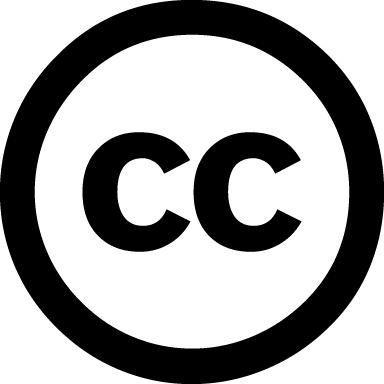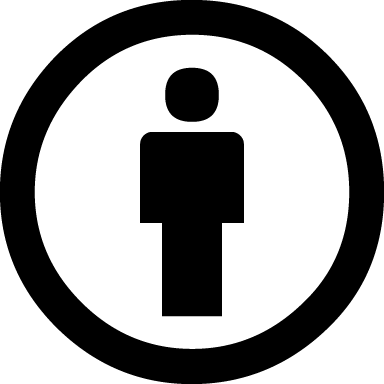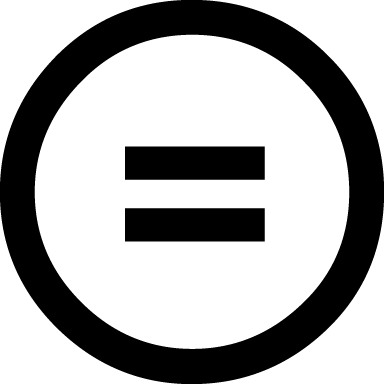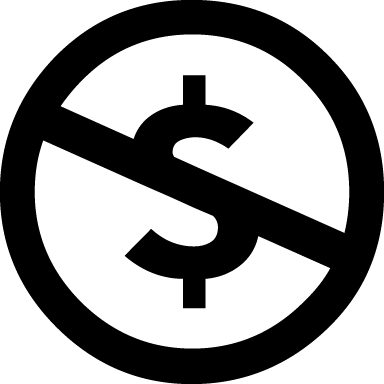What’s the Difference Between Copyright and Creative Commons?
At OryCon earlier this month I got to sit on a panel about Creative Commons licensing and how it can be used in creative work.
As someone who depends on Creative Commons licensing (all images in my posts are licensed via a Creative Commons license) I am always excited to hear the different ways people are using these licenses.
Because I think Creative Commons is great and I’d love to see people use it more often, I thought I’d explain what Creative Commons licensing is, how it differs from copyright and how you might be able to use it in your work.
What’s the Difference Between Creative Commons and Copyright?
Creative Commons is actually a license that is applied to a work that is protected by copyright. It’s not separate from copyright, but instead is a way of easily sharing copyrighted work.
Because copyright is magical, a good chunk of what’s created is automatically protected by copyright. Copyright confers some pretty heavy duty protections so that others don’t use your work without your permission.
Not everyone needs or wants all those protections. But if they spent the time to license the work each and every time someone was interested in using it, they’d spend a lot of time and money on letting people use their work.
Enter: Creative Commons.
Creative Commons is a non-profit organization that provides licensing structures people can use to license their copyrighted work to anyone willing to abide by the licensing terms. It makes it easy to share work without giving up total control or spending countless hours granting permissions.
How Do You Use Creative Commons Licenses?
Point your internet machine toward creativecommons.org.
There you can learn about the different ways you can license your work using Creative Commons licensing.
Remember: if you license your work you’re giving someone permission to use it. The restrictions you place on the license tell the person getting the license (called the “licensee”), “You can do what you want with the work, except for these things.”
Creative Commons licensing uses four basic restrictions:
Attribution — This requires people who use your work to attribute it to you. No cropping the image to cut off your name or, worse, replacing your name with theirs. They have to let people know that you are the creator or licensor of your work.
Non-Commercial — This means that they can use your work so long as they aren’t using it for a commercial purpose. What’s that mean? Creative Commons defines commercial use as “primarily intended for or directed toward commercial advantage or private monetary compensation.”
So if you want to take the licensed image and incorporate it into your add free website of freelancer resources? Aces.
You want to use that image as the background on the label for your artisanally crafted, locally sourced, fair-trade coffee soda? No dice.
No Derivatives — A derivative work is a work that modifies the original copyrighted work. So a movie is a derivative work of a novel. You don’t have to have such radical changes to constitute a derivative work, though; a sequel to a novel is also a derivative work. If a work is shared under a No Derivatives license, they can use your work as long as they don’t modify it.
Share Alike — One of the more permissive restrictions, share alike allows others to use and modify your work so long as they allow others to use and modify the work they create using your work.
All Creative Commons licenses carry the attribution requirement. You can mix and match the other restrictions that feel best to you. Attribution Share Alike, Attribution Share Alike Non Commercial, Attribution No Derivatives, etc., etc.
The only two restrictions that don’t play well with one another are the Share Alike and No Derivative restrictions.
There are different versions of the licenses (the current version is 3.0). The license language is updated when the organization identifies improvements that will benefit users. You can track the differences between the versions on the Creative Commons website.
How do I make $$$ using Creative Commons licensing?
You don’t. At least not from the license itself.
You can still sell works that you license using the Creative Commons structure. One of the other panelists at OryCon, MeiLin Miranda, is an author who releases her books under an Attribution Non-Commercial No Derivatives license.
That license allows her to limit uses she’s not comfortable with and she can still make money selling her books.
And if someone wants to turn one of her novels into a film? As a derivative, commercial work, they’d have to come to her to get permission (and pay for privilege).
What if someone misuses a work I’ve licensed under Creative Commons? What if I’ve licensed it as non-commercial and they are using it commercially?
If someone uses your work in a way that contradicts the terms of the Creative Commons license you used, the license for that person terminates. Since they no longer have a license to use your work, they’re committing copyright infringement. You can take action against them the same way you would against someone who was infringing a copyrighted work that isn’t licensed under the Creative Commons structure.
Creative Commons licensing can let you share your copyrighted work with others in a way that encourages them to use and share your work. It’s an internet-friendly alternative to pure copyright that still allows you to keep the rights that are most important to you.
How do you think you could use Creative Commons licenses with your work?
Categories: The Rest









[…] credit: http://www.workmadeforhire.net/the-rest/whats-the-difference-between-copyright-and-creative-commons/ and […]
[…] looking at protection of ones work, the original artist should not look at the topic as copyright vs. Creative Commons. “Creative Commons is actually a license that is applied to a work that is protected by […]
[…] looking at protection of ones work, the original artist should not look at the topic as copyright vs. Creative Commons. “Creative Commons is actually a license that is applied to a work that is protected by […]
[…] heimild : http://www.workmadeforhire.net/the-rest/whats-the-difference-between-copyright-and-creative-commons/ […]
[…] are imposed over creative work. I have created this little infographic to give a better idea of the differences between Copyright and Creative […]
[…] http://www.workmadeforhire.net/the-rest/whats-the-difference-between-copyright-and-creative-commons/ […]
[…] an organization or that there were different kinds of Creative Commons licenses. I found the piece What’s the Difference Between Copyright and Creative Commons? to be helpful as I tried to understand the difference between the two. In this piece the writer […]
[…] “Creative Commons is a non-profit organization that provides licensing structures people can use to license their copyrighted work to anyone willing to abide by the licensing terms.”Source […]
[…] (Source:http://www.workmadeforhire.net/the-rest/whats-the-difference-between-copyright-and-creative-commons/) […]
It’s still not clear to me whether I need to also get a copyright through the U.S. copyright office. Could you clarify that? I understand that every work is automatically copyrighted but that people should go through traditional channels to ensure their work is protected. Would I get that same protection by going through Creative Commons? Or should I be doing both?
Never mind, someone just explained to me that I still should go through the U.S. Copyright office.
Glad you got some helpful guidance! Your source is right: registering your copyright with the US Copyright Office (copyright.gov) provides benefits and protection that a Creative Commons license can’t. Both are useful, but they do different jobs. You can think of the registration as a way of protecting your rights, and using a Creative Commons license as a way of giving others limited rights to use your work in a way you dictate.
[…] Creative Commons is not the same as copyright, however. ‘Creative Commons is actually a license that is applied to a work that is protected by copyright. It’s not separate from copyright, but instead is a way of easily sharing copyrighted work.’ (Source) […]
[…] Attribution License: This allows the photographer to permit free download of their copyrighted photograph. In turn, under the Creative Common License (CC0), the buyer must give attribution to the photographer. How you give credit is in accordance with the photographer’s request. This means simply this: if you plan to use their photograph for commercial purposes, always seek their permission first. […]
[…] http://www.workmadeforhire.net/the-rest/whats-the-difference-between-copyright-and-creative-commons/ […]
[…] Lane, K. (2013, November 22). What’s the Difference Between Copyright and Creative Commons? Retrieved from http://www.workmadeforhire.net/the-rest/whats-the-difference-between-copyright-and-creative-commons/ […]